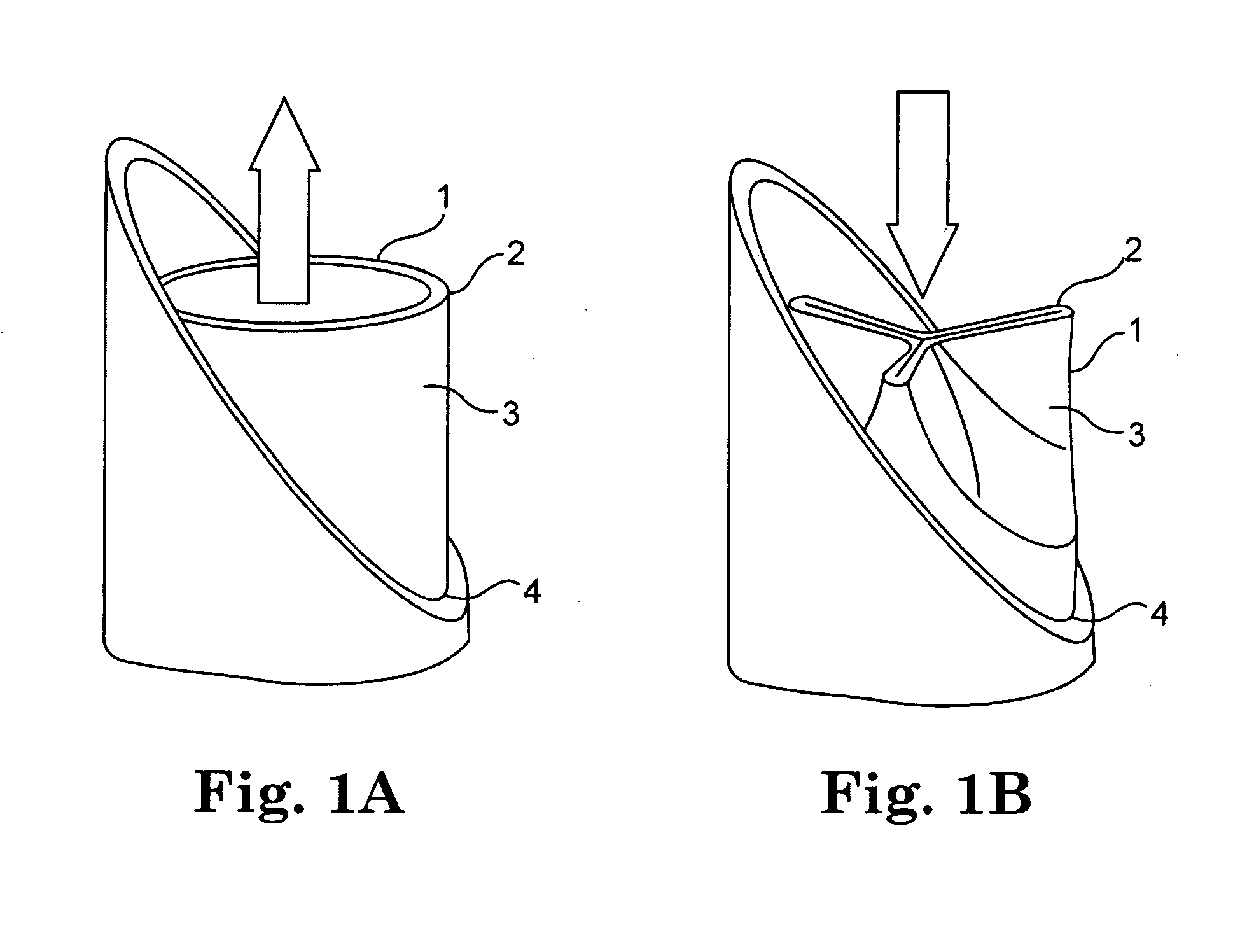Methods and systems for reducing paravalvular leakage in heart valves
a technology of paravalvular leakage and heart valve, which is applied in the field of cardiovascular surgery, can solve the problems of increasing achieve the effects of reducing the chance of paravalvular leakage, less and less invasive, and reducing the chance of suturing the valve around the annulus
- Summary
- Abstract
- Description
- Claims
- Application Information
AI Technical Summary
Benefits of technology
Problems solved by technology
Method used
Image
Examples
Embodiment Construction
[0039]The present invention relates to methods, systems, and devices for reducing paravalvular leakage in heart valves. FIGS. 1A and 1B generally illustrate one exemplary embodiment of a heart valve 1. As illustrated in FIG. 1, valve 1 includes a distal outflow end 2, a plurality of leaflets 3, and a proximal inflow end 4. A typical valve functions similar to a collapsible tube in that it opens widely during systole or in response to muscular contraction to enable unobstructed forward flow across the valvular orifice, as illustrated in FIG. 1A. In contrast, as forward flow decelerates at the end of systole or contraction, the walls of the tube are forced centrally between the sites of attachment to the vessel wall and the valve closes completely as illustrated in FIG. 1B.
[0040]FIGS. 2A, 2B, and 2C illustrate the anatomy of a typical aortic valve. In particular, FIG. 2A shows a top view of a closed valve with three valve sinuses, FIG. 2B shows a perspective sectional view of the clos...
PUM
 Login to View More
Login to View More Abstract
Description
Claims
Application Information
 Login to View More
Login to View More - R&D
- Intellectual Property
- Life Sciences
- Materials
- Tech Scout
- Unparalleled Data Quality
- Higher Quality Content
- 60% Fewer Hallucinations
Browse by: Latest US Patents, China's latest patents, Technical Efficacy Thesaurus, Application Domain, Technology Topic, Popular Technical Reports.
© 2025 PatSnap. All rights reserved.Legal|Privacy policy|Modern Slavery Act Transparency Statement|Sitemap|About US| Contact US: help@patsnap.com



